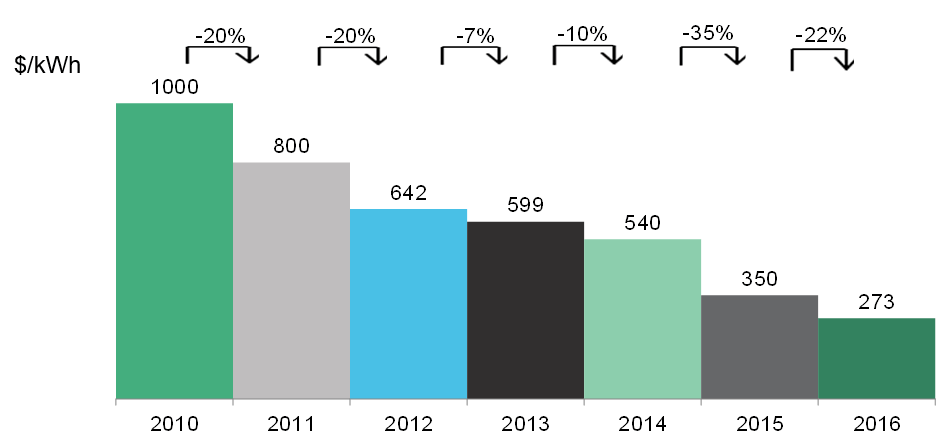Are you looking to install a solar system for your home or business with battery backup? Or, do you wish to fit out your existing grid-tied project with a battery system?
Explore the team’s discussion below and find out how you can optimise your PV project to its specific needs.
How does it work?
A battery storage system temporarily stores energy generated by your solar panels. From the battery, this energy can subsequently be used to power appliances in the home or workplace in times of low yield or perhaps during load shedding.
Solar batteries convert the DC energy from the solar panels into AC power for later use, similar to solar inverters. Any excess electricity generated from the panels during the day is stored and charges the battery. If incorporated into a grid-tied system, the energy can be stored for later use rather than fed back into the grid.
If grid-tied, your system will send energy back to the grid again once the battery is fully charged. Consequently, you will only revert to the grid once the battery power has been exhausted.
In practical terms, this means you can store solar power on-site for later use when the sun is not shining.
Modern-day solar batteries are made of lithium-ion phosphate – a cheaper, more efficient alternative to traditional lead-acid batteries. It is also far less polluting to dispose of lithium-ion compared to lead-acid.
Off-grid systems will rely entirely on having a battery as the grid is unavailable and therefore cannot be relied upon when the yield from solar panels is insufficient.
However, current technology means hybrid systems are available, where the grid acts a source of additional power if the battery is exhausted, or vice versa.
Benefits of battery storage
Installing a battery system into your solar project paves the way seamlessly to self-sufficiency. For grid-tied locations, it enables greater flexibility, independence and freedom from the grid. You will no longer need to rely on the grid or be concerned about being let down when you need electricity most.
Other benefits of battery storage include:
- Security in the event of power cuts and rising electricity prices
- Make the most of every watt generated rather than importing surplus power to the unreliable grid
- Quieter and most cost-effective than a diesel generator
- Significant reduction in energy bills
In recent years, the costs of battery storage have decreased rapidly. For example, in 2016, the price of a lithium-ion battery had come down by 73% against the previous seven years, as demonstrated by the graph below from Bloomberg New Energy Finance.

These plummets in costs are predominantly down to the increased market for electric vehicles. However, the demand for domestic and small commercial solar projects is also a contributor to this decrease. What’s more, many companies and households currently relying on traditional lead-based batteries are seeing the initiative to make the switch to lithium-ion given its reduced cost, heightened degree of safety and enhanced lifecycle.
The best of both worlds
At present, more than 70% of all grid-connected PV systems have a storage system. With batteries becoming increasingly cheaper, it is becoming easier to ensure power is available 24-hours a day, even past sundown.
If your commercial building relies on diesel generators for a third or more of the time, solar power is sure to revolutionise your business. Individuals in South Africa have experienced up to seven hours of daily scheduled blackouts during periods of load shedding.
It is, therefore, invaluable to take advantage of the African sunshine and harness the power of solar to keep your business up and running during power outages. Store the energy generated during the day in a battery for use in peak evening times – usually when load shedding comes into effect.
Inspired by Robben Island
South Africa’s historic Robben Island is powered by its very own microgrid, meaning it is entirely energy independent. During its first two months in operation, the project produced 187,000 kWh of clean energy with solar power. The microgrid saved over 53,000 litres of diesel and an equivalent of 495 tonnes of CO2 emissions.
By 10 am, the power generated from the solar panels exceeds the island’s demand, and the batteries begin to charge. The cells are activated and start to discharge once the sun begins to set at around 6 pm, meeting the power demands of the island until about 8.30 pm when generators are required to kick in. For the island to cease reliance on the generators, a larger battery bank is required.
So – what are you waiting for? Find an installer today and explore the range of KODAK Storage Systems to unlock your true potential.
Blue Mountain PV is a brand licensee of Eastman Kodak Company. The Kodak trademark, logo and trade dress are used under license from Eastman Kodak Company.




